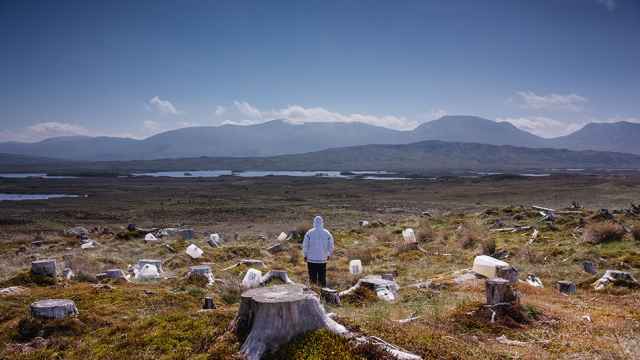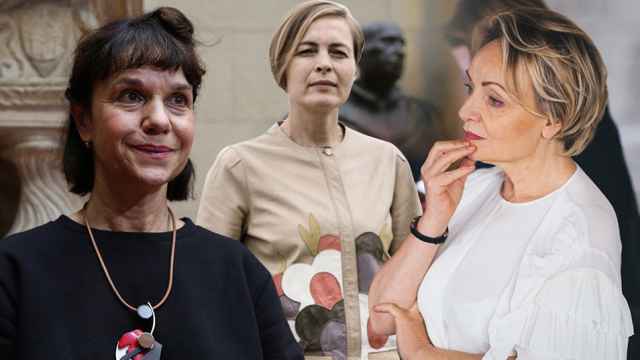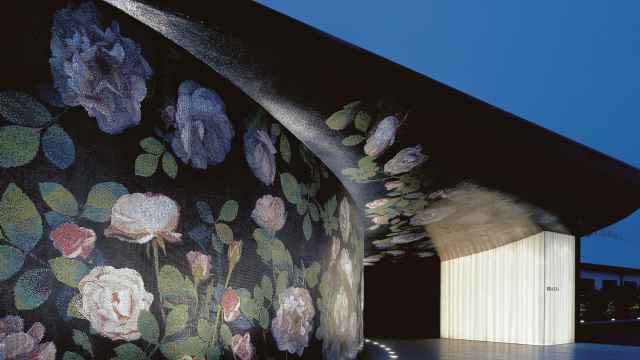If you typically tend to skip introductory notes at exhibitions, you may want to make an exception for New Nature, a new project on display at the Manege Exhibition Hall in St. Petersburg.
The works by the Recycle Group — artists Andrei Blokhin and Georgy Kuznetsov — in New Nature focus on Homo Virtualis, a species of people that fully belong to the digital world, and their reality. Blokhin and Kuznetsov use recycled material, optic fiber cable and a construction grid to create cutting-edge interactive sculpture and dynamic installations. The art works on display — some from the past, some created for this space — explore how relations between humans and technology are becoming closer and more sophisticated every second.
Blokhin and Kuznetsov, who formed their artistic tandem in 2008 in Krasnodar, won the Kandinsky Prize in the Young Artist category in 2010 and represented Russia at the 2017 edition of the Venice Biennale. True to its name, the group started out making art objects from recycled material but eventually moved on to other forms of transformations to discover new meanings in familiar objects.
Before entering the exhibition, visitors are offered three options of interacting with the exhibits and the space around them. The best option is to download the Recycle Group application, but you could also download the audio guide or explore the project’s website at recyclexmanege.com. You can opt out of all of them, but if you do, you’ll miss an entire dimension of the show.
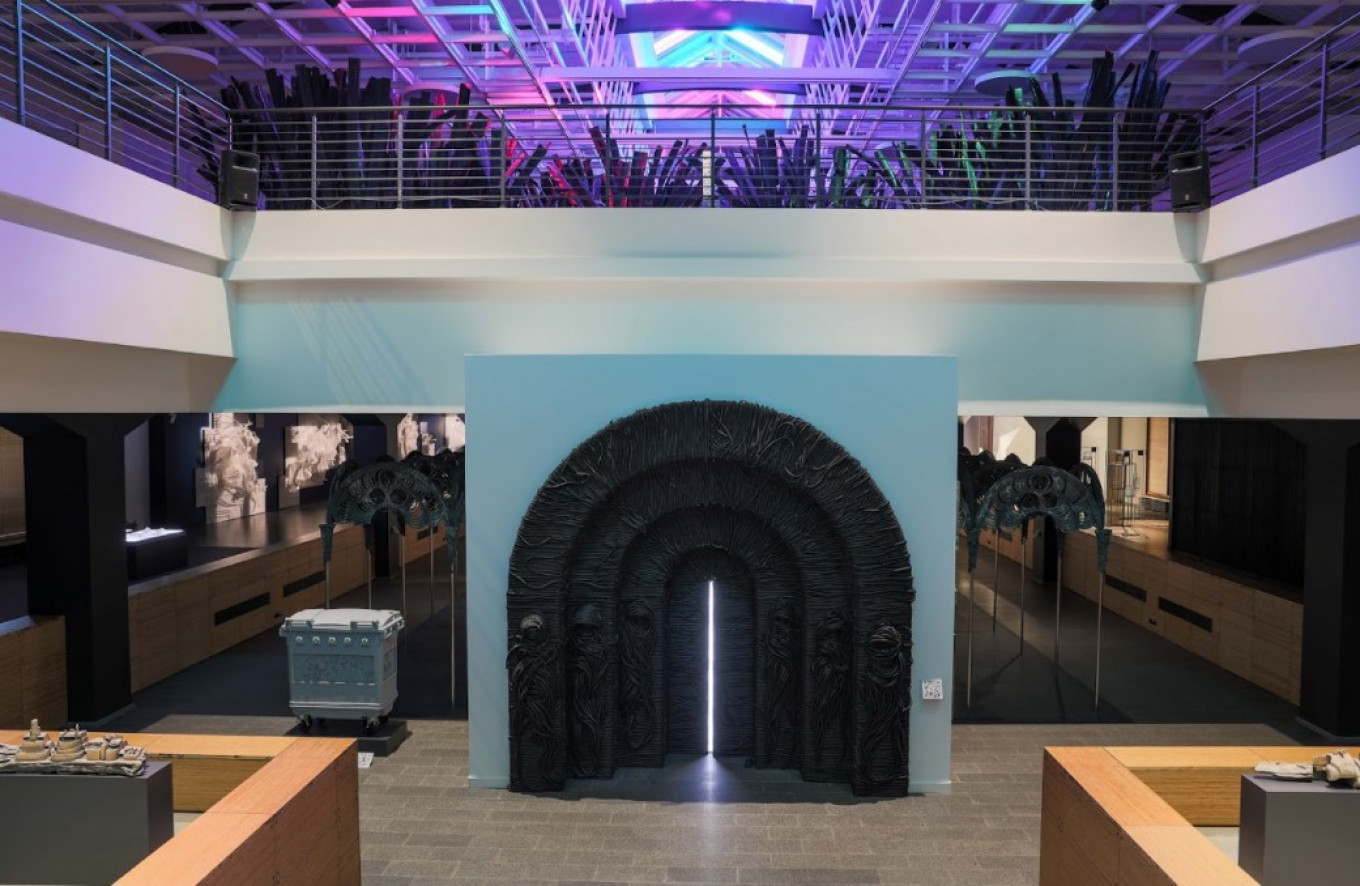
Walking through physical reality
The display opens with a symbolic art object called Zero: an arch built from outdated computers forming a perfect oval with its reflection on the metal surface beneath it. This entrance-art might represent a classical entrance, or it might be the symbol of a new beginning — or the reset on something that has outlived itself. Or it might be a reference to traditional Japanese torii gates that stand at the entrance to Shinto shrines and allude to the transition from the mundane thought to the spiritual and sacred. Zero belongs to two different worlds at once, just as the arch and its reflection make a single piece of art.
“The arch is also a reference to the Closed Systems installation on the facade of Manege,” Alyona Ageyeva, the project’s curator, told The Moscow Times. “The installation is a trio of zero-shaped objects that are human figures made from a construction grid. Zero is the key symbol for the exhibition in general, because in the digital world all of us both use and produce content, and therefore the consumption circle is complete.”
Physical, augmented and spiritual — these three dimensions make up the space of New Nature. Nature comes to visitors in the Forest of Dead Links and the Garden of Diverging Stones, which take up the entire second floor of the Manege. From the ground floor the black forest with flashes of neon light above it looks like a stone jungle, but up close you see it’s a dense forest made of gigantic plastic feathers with thousands of real dead links printed on them. The garden is a reference to traditional Japanese stone gardens, with the difference that the stones are moved by a technical algorithm.
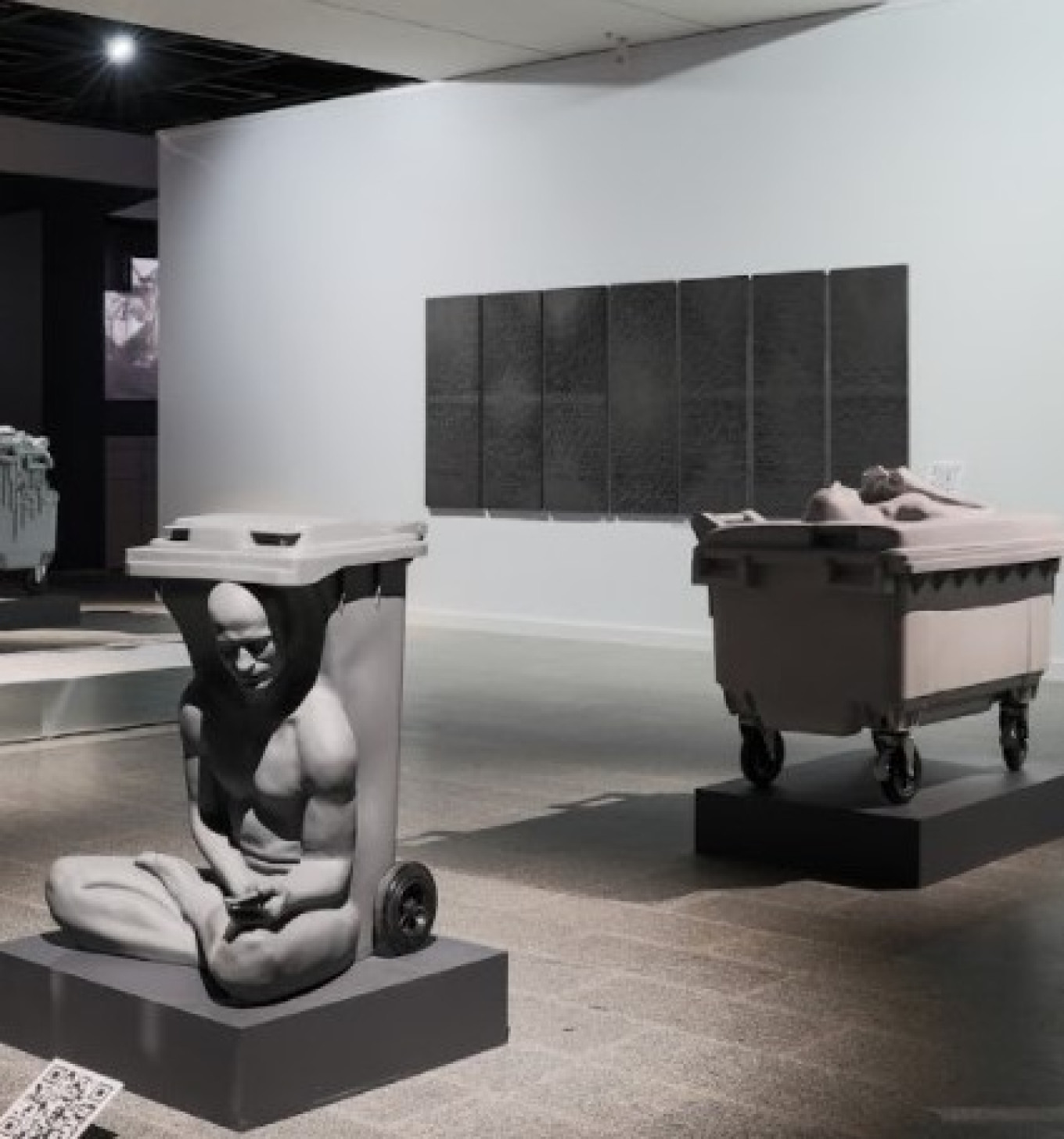
This cerebral display fusing physical art objects with augmented reality blurs the boundaries between the real and the digital, drawing visitors into a technological performance that is filled with an array of associations that cross time and cultures. A sarcophagus is in the form of a waste bin (Container. Meditation Series of Art Objects), and a monastery garden (Cloître) is created entirely from rolls of fiber optic cable. Tall black gates with a sharp ray of light glimmering from behind the closed doors (The Gates installation), are decorated with gloomy sculptures made of optic fiber cable and reminiscent of Gothic churches. However, unlike the images of saints and martyrs that adorn the gates of ancient temples, these faceless guards bear no sign of gender, origin or any personal feature.
On the second floor a sculpture group of young people desperately peer at the screens of their devices, posed as if in prayer. Wanting to be loved, encouraged or simply heard in the frustrating or disappointed “real” world, they are drawn to screen icons.
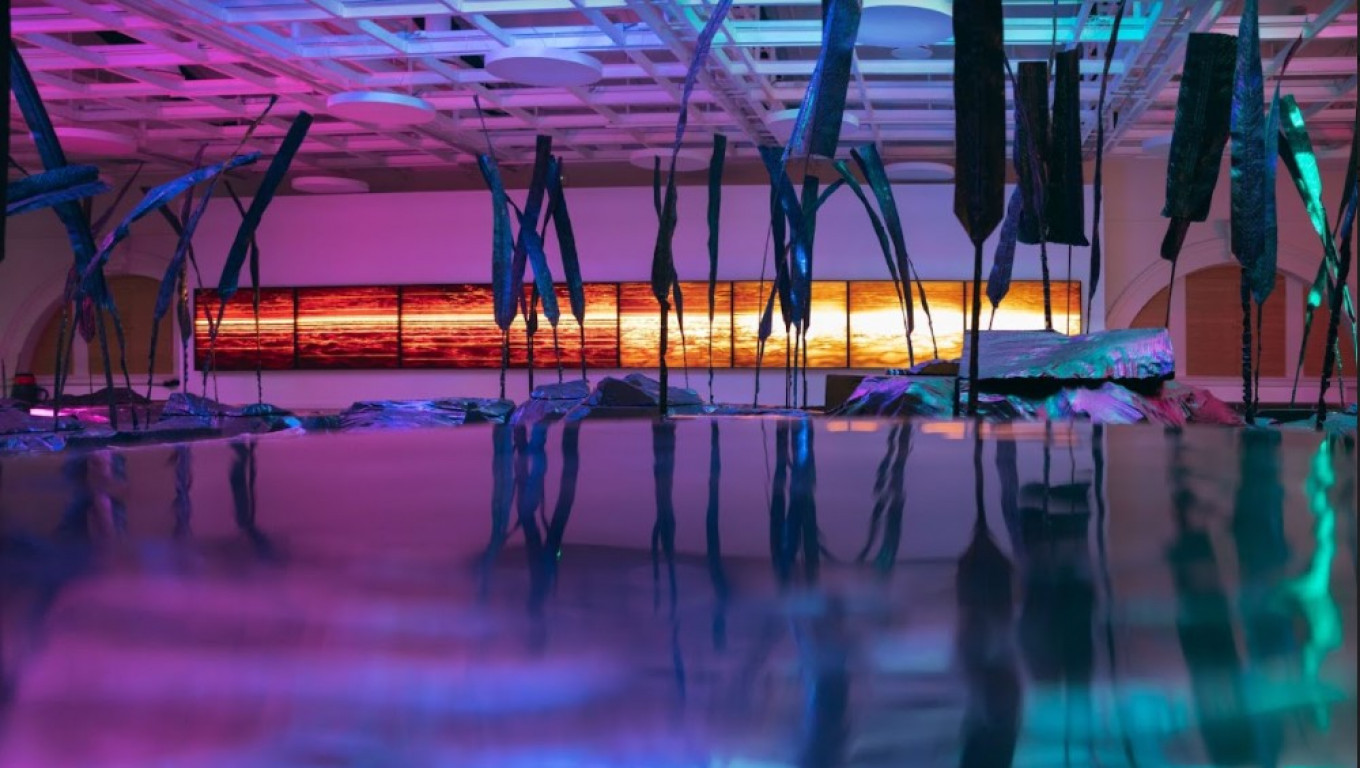
Experiencing virtual reality
While you exist in one dimension of physical reality, in the virtual reality of the downloaded app you can focus on empty frames in the installation called Presence and they’ll be filled with images that make the dark space suddenly bloom with light and motion. The Blocked Content installation reveals its own hidden drama through the app: visitors get to meet the inhabitants of iceberg-shaped mountains. These are users whose content has been blocked and who have been blocked by the system. A few steps further at the railroad, you can send your phone on a journey and download a marvelous record of the trip.
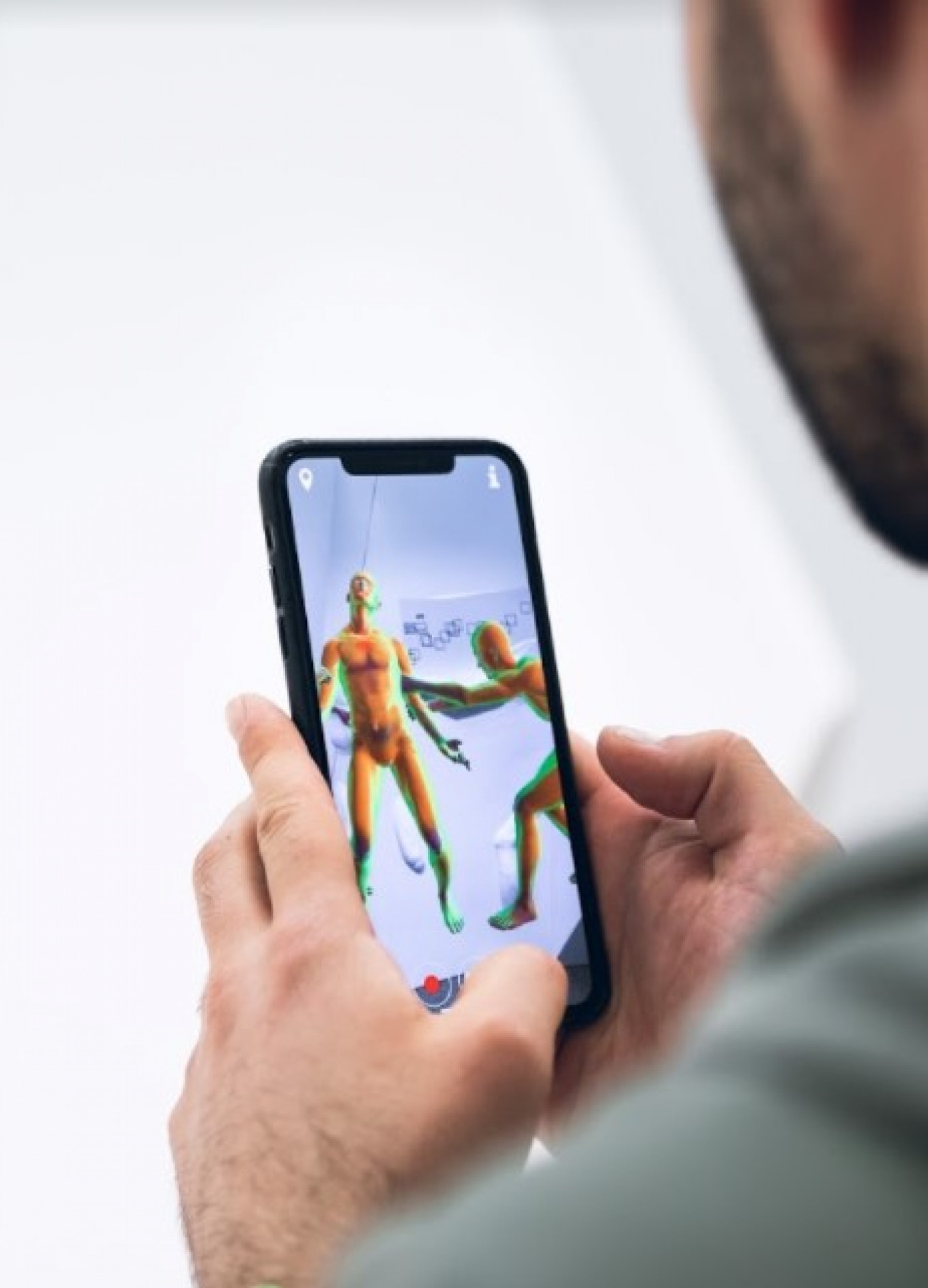
If you are willing to share the content of your social media pages with the digital intelligence, you can have your fortune told. This fortune teller lets you choose an optimistic or a pessimistic life scenario in advance. The personal forecast is delivered to each visitor when they enter one of two fortune-telling booths. The experience is strictly private: only one visitor at a time is allowed in a booth.
Blokhin and Kuznetsov said at the show’s opening that it took almost two years for the project to complete. "We wanted to explore a connection between the human brain and digital intelligence,” Blokhin said. “In a way, we wanted to give the audience a chance to put themselves in the place of machines, to look at reality through the lens of a robot, an opportunity to try and analyze what they see using the digital tools provided by the machines.”
For more information about the exhibition and tickets, see the site here. It runs until Sept.15.
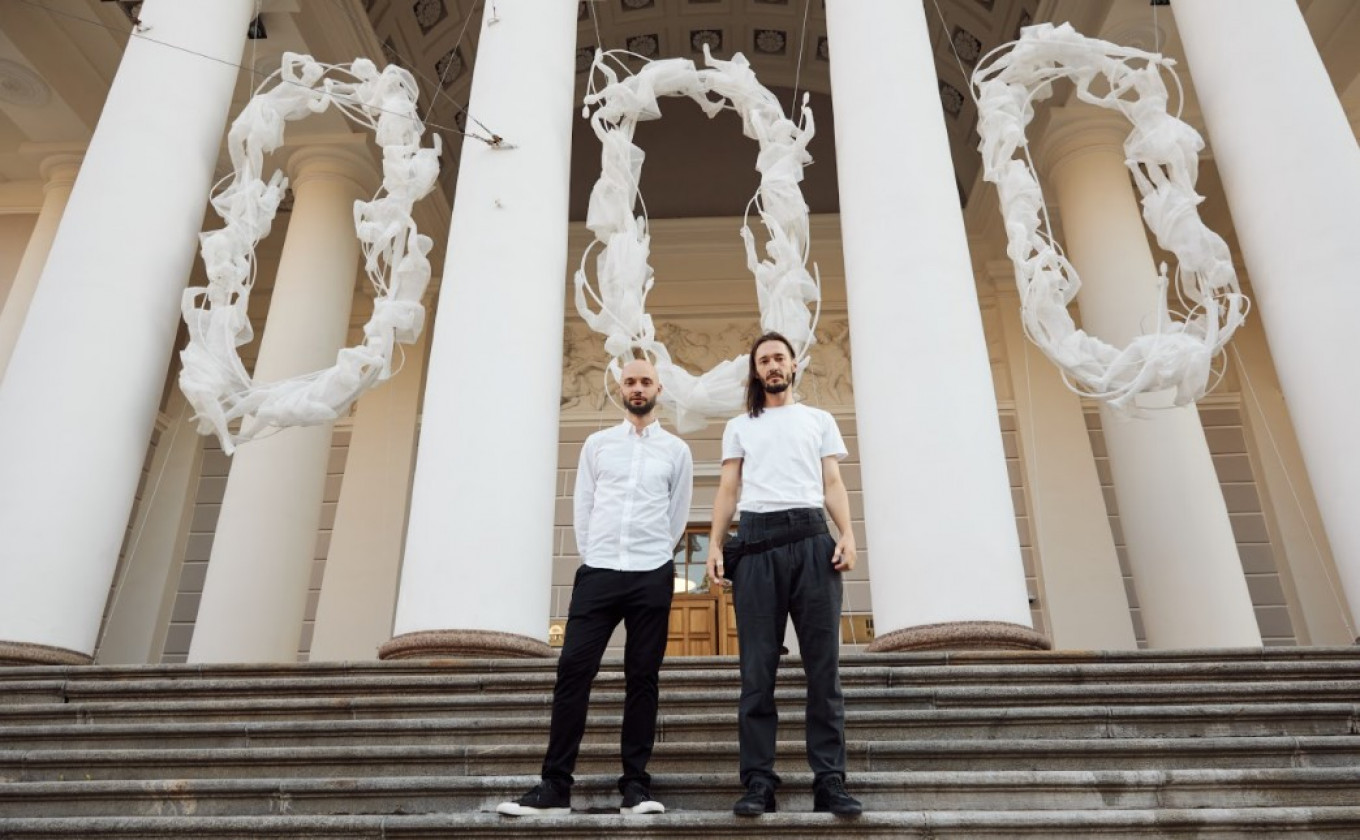
A Message from The Moscow Times:
Dear readers,
We are facing unprecedented challenges. Russia's Prosecutor General's Office has designated The Moscow Times as an "undesirable" organization, criminalizing our work and putting our staff at risk of prosecution. This follows our earlier unjust labeling as a "foreign agent."
These actions are direct attempts to silence independent journalism in Russia. The authorities claim our work "discredits the decisions of the Russian leadership." We see things differently: we strive to provide accurate, unbiased reporting on Russia.
We, the journalists of The Moscow Times, refuse to be silenced. But to continue our work, we need your help.
Your support, no matter how small, makes a world of difference. If you can, please support us monthly starting from just $2. It's quick to set up, and every contribution makes a significant impact.
By supporting The Moscow Times, you're defending open, independent journalism in the face of repression. Thank you for standing with us.
Remind me later.



